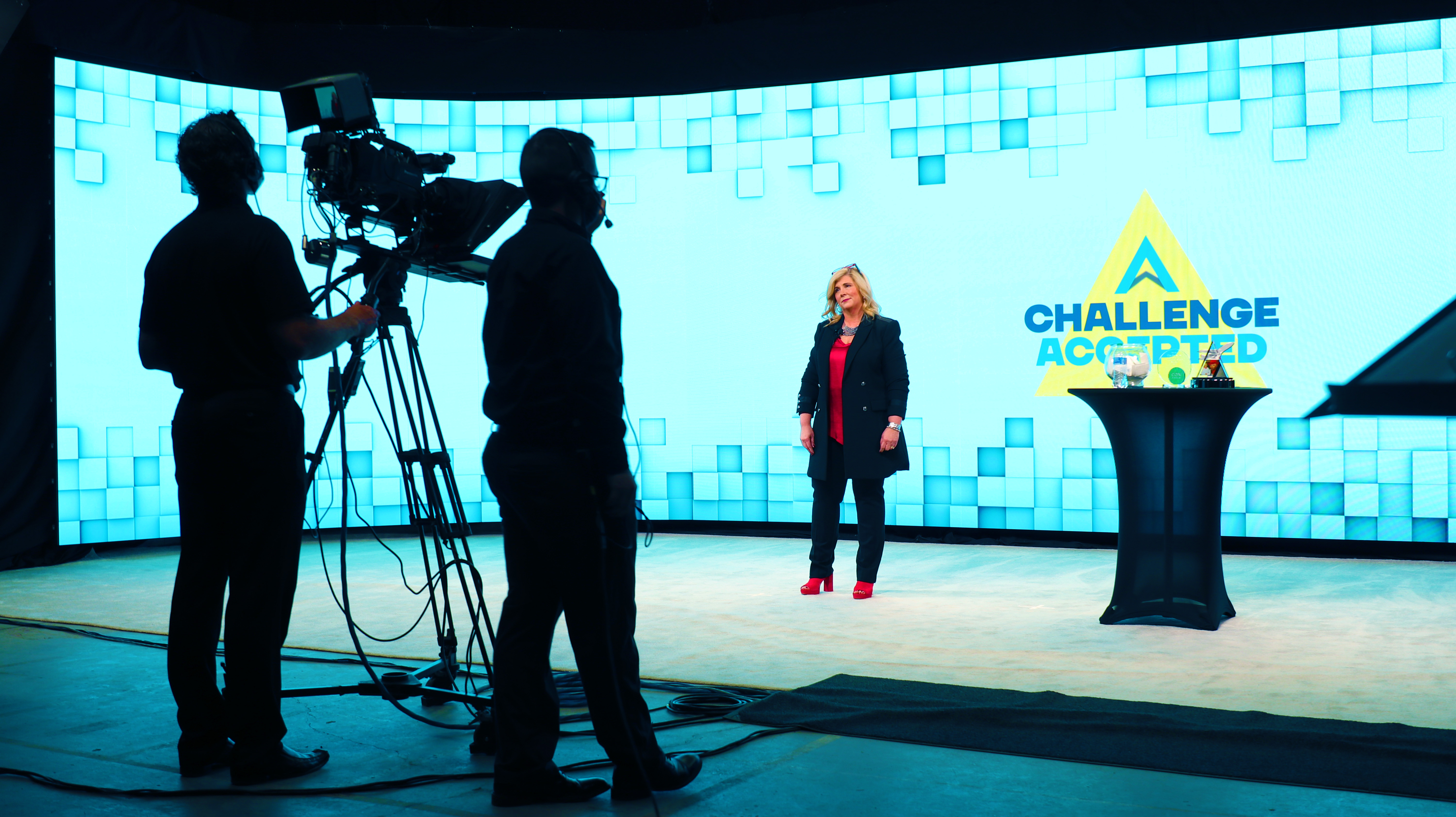The collapse of the live events industry in 2020 in the wake of the COVID-19 pandemic is well documented. When event organizers realized pandemic restrictions would force them to cancel conferences, concerts, and sports for an extended period of time, out-of-the-box thinkers came to the table with solutions to keep the events industry alive by connecting people virtually.
[The Integration Guide to Streaming]

One year later, the prevalence of livestreams and webinars is leading industry leaders to retool the virtual event experience. “I think everyone is burnt out [on virtual events], which is leading to less engagement, less attendance and—eventually—little to no benefit for so many businesses needing to spread a message,” said Abby Wolfe, director of marketing and communications at Cory’s Audio Visual.
While the initial shockwaves of the pandemic led to layoffs and restructuring in event production, Wolfe noted that “audiovisual providers now have to push their capabilities and their creativity to lengths they never had to before the pandemic.” She added that event production is focused less on technology now and more on creativity and engagement.
Buzz brands like Zoom and videoconferencing stalwarts like Cisco Webex and Microsoft Teams helped get organizations over the sudden, immediate shift to distance communication beginning last March, and streaming platforms designed for live performances like StageIt struggled to keep up with newfound demand.

Like Wolfe, Wallace Johnson, principal at WLJ Consulting, said the world has outgrown those platforms and the traditional webinar format.
“Integrators who rely on in-person events for income have to evolve, much like the live events industry has had to learn new ways to communicate a message, showcase products, and deliver content that will keep attendees and customers engaged,” said Johnson. “The solution has been to provide content in a format similar to watching broadcast television versus just a presenter with slides on the screen.”
Video streaming software including Wirecast and vMix, professional lighting kits, and live production switchers like ATEM from Blackmagic Design are allowing presenters and engineers to manage and stream several simultaneous video sources in remote productions. Virtual event studios—essentially soundstages outfitted with all the production tools of an on-site event—are a way for AV integrators to get into the game.
Integrators have an opportunity to move into the virtual event space by “designing and building broadcast studios and stage environments in corporations and meeting facilities,” said Johnson. “I have seen the trend of more corporate offices looking for high-end broadcast technology for executives to conduct town halls and quarterly meetings, rather than having them conduct these meetings from their desk at home or in the office. Hotels and convention centers are looking at installing these types of rooms at their facilities to support hybrid meeting capabilities. Integrators have the opportunity, especially in hotels, to design and build a consistent model throughout a hotel chain and connect multiple locations for the ultimate hybrid meeting experience.”
[The Integration Guide to Esports]
The events industry has proven that such a format is fully scalable, with the Consumer Electronics Show—or CES, the widely influential annual exhibition produced by the Consumer Technology Association in Las Vegas—leading the way. CES went fully virtual this January. While last year it managed to draw 4,400 exhibitors and 170,000 in-person attendees across 2.9 million square feet of mostly indoor convention center space, its virtual incarnation in January 2021 lost about half of its traditional exhibitors and attendees, but made a strong showing online, where CES keynotes and panel discussion video streams received about 3 million views. Many other annual events went online in 2021, including South by Southwest (SXSW), an annual mainstay of the music, film and interactive arts industries.

“We’ve seen a tremendous growth over the past year in productions of all sizes—large conferences like CES needed live components, smaller grassroots performances needed to be streamed, and corporations required live video for internal and external communications,” said George Klippel, director of channel sales at remote production firm LiveU. “While the crews are leaner, there is money on the table to be made in this new reality.”
Broader vaccine distribution and a decreasing trend of new COVID-19 infections suggests the pandemic may be waning. In mid-March, new cases reported weekly to the Centers for Disease Control and Prevention totaled just 25 percent of the nearly 250,000 new cases reported at the peak in January, though specifics vary widely by region. As economies around the world emerge from restrictions on movement, more events are likely to adopt a hybrid format that creates shared experiences for both virtual and on-site attendees.
SXSW, whose cancellation in March 2020 was the first big domino to fall for the events industry, is one of them. The event’s chief programming officer, Hugh Forrest, recently told Austonia.com that going virtual in 2021 allowed them to increase attendance among international audiences and to land speakers such as Richard Branson. Festival organizers expect the trend of increasing virtual attendance to continue even after SXSW returns as an in-person event.
Hybrid models allow events to accommodate capacity limitations and “the varying comfort level of attendees who may not be ready to attend in person just yet,” said Klippel. “This requires all panels, fireside chats, and keynotes to be produced and streamed online. Organizers will also want to give virtual attendees incentive to spend the money on a virtual conference ticket. This type of option provides unique live moments to be captured and shared with the virtual audience. This model is definitely a viable solution for a nimble AV integrator in the long run, as they can produce in-person events and virtual events simultaneously.”
[5 Things Event Planners Wish AV Techs Really Knew]
AV integrators are well positioned to provide the products and services that enable remote productions, such as multiple systems routers, servers, switchers, and encoders, noted Klippel. Bonded cellular technology, which combines elements of legacy cellular protocols like 3G with current 4G LTE tech and Wi-Fi to create a robust uplink connection, as well as REMI (Remote Integration Models) workflows, have become commonplace in many vertical markets.
“These workflows offer multiple cellular modem-based encoders with Wi-Fi and Ethernet to give the most reliable means of transmission from any location, and come in various sizes to fit any budget, including units based on smartphones,” said Klippel. “This enables easy setups in home pop-up studios or locations without internet, or where internet is hard to come by or cost-prohibitive.”
Johnson added that the rapid development pace of technologies involved in virtual event production can be an advantage to AV integrators. “The technology around [hybrid events] has gotten a five-year acceleration in development and, quite frankly, most people [are] focused solely on the in-person experience,” he said. “Now that there is a genuine focus on making the hybrid experience better, this is the time for integrators to be conversing with customers about packing solutions to deliver a better hybrid experience.”
Wolfe summed it up best: “The pandemic has rewired brains, processes, standards, and how we all work with others. The world has changed, and we have to change with it.”
Click here to read more stories from the April 2021 issue of SCN.
